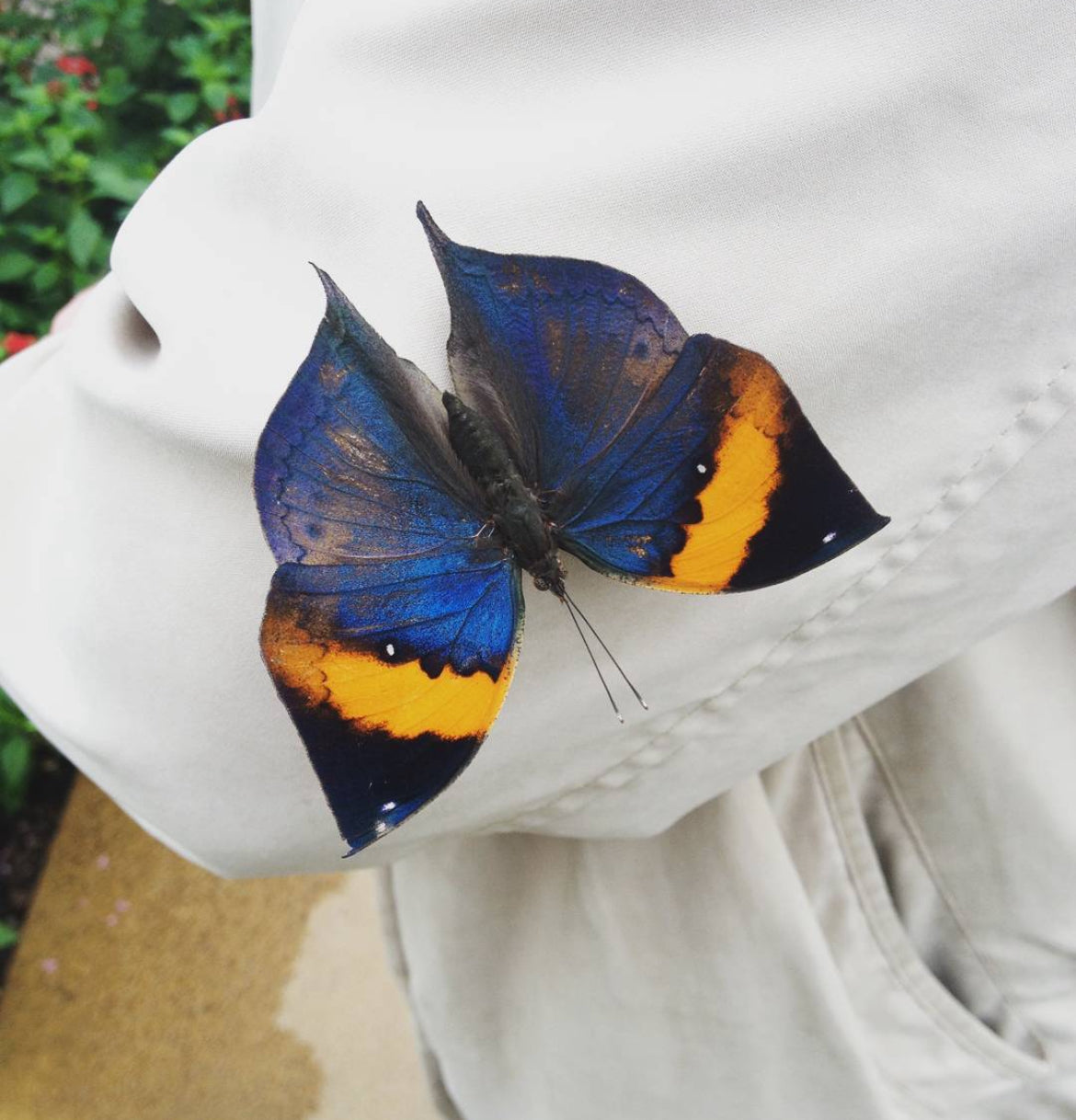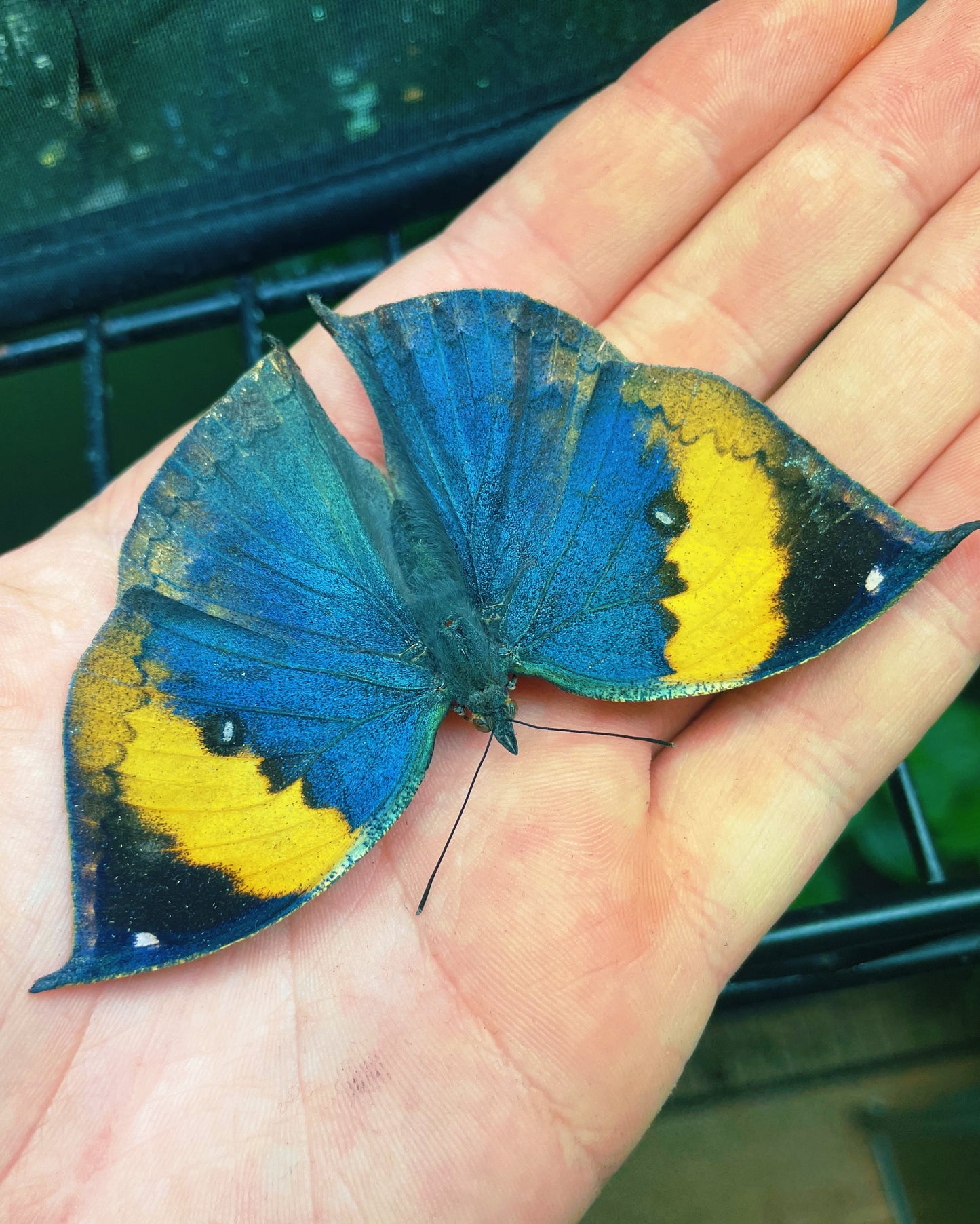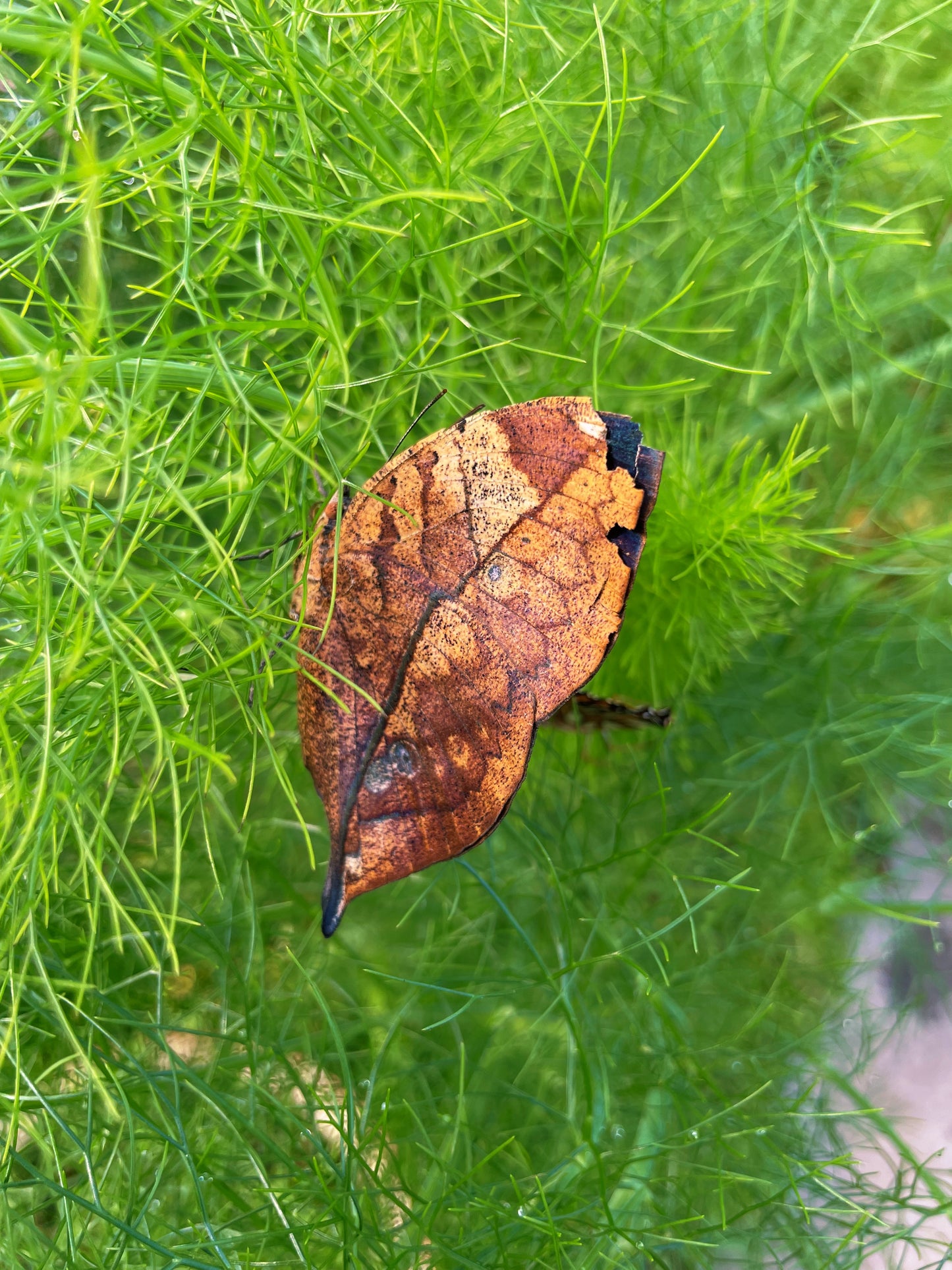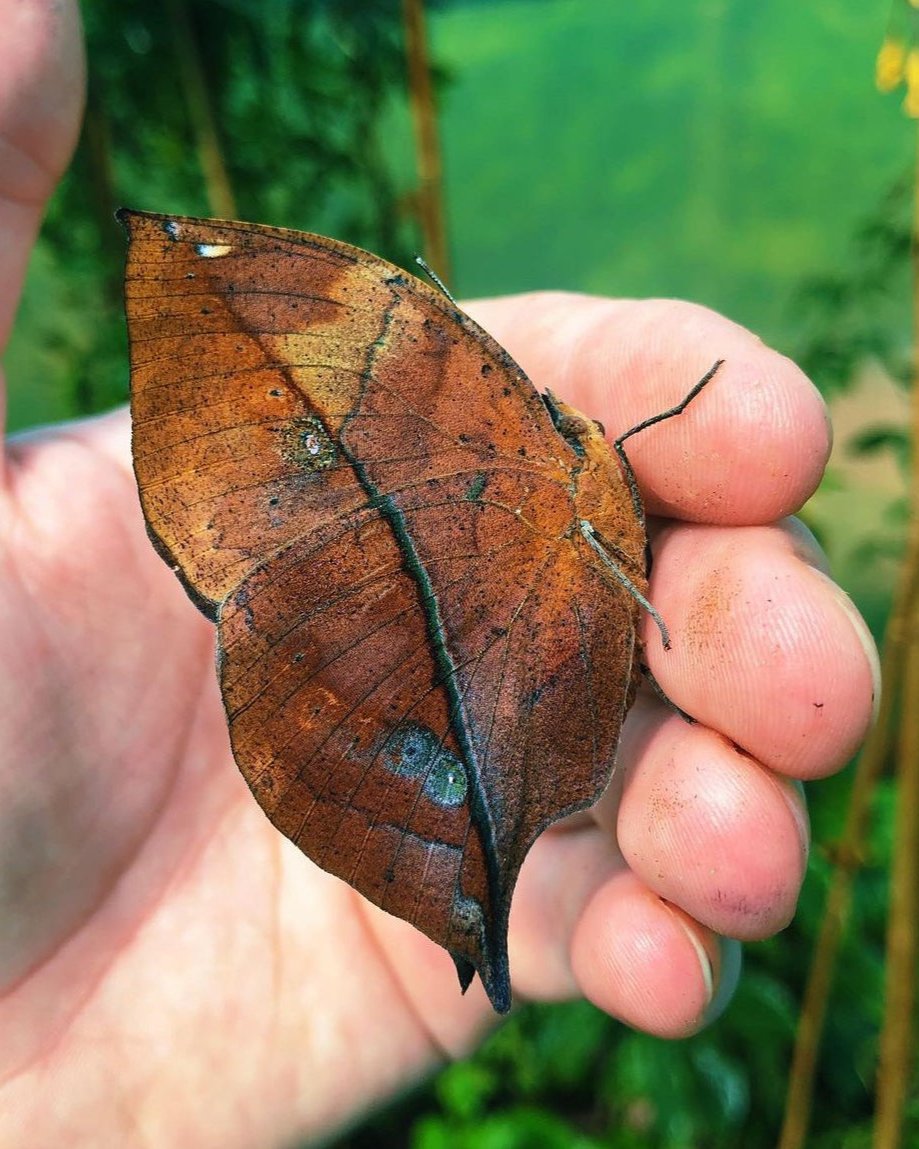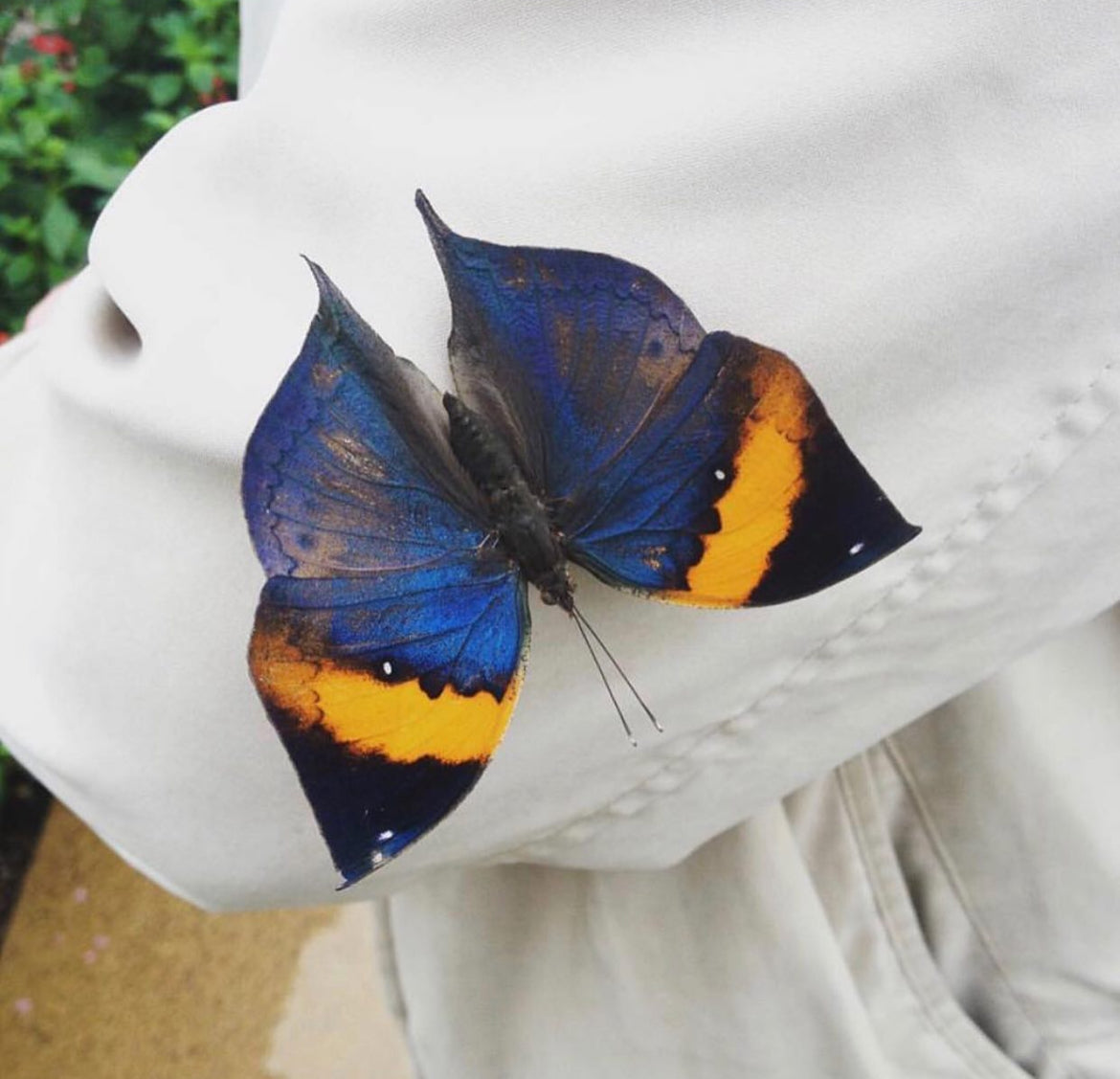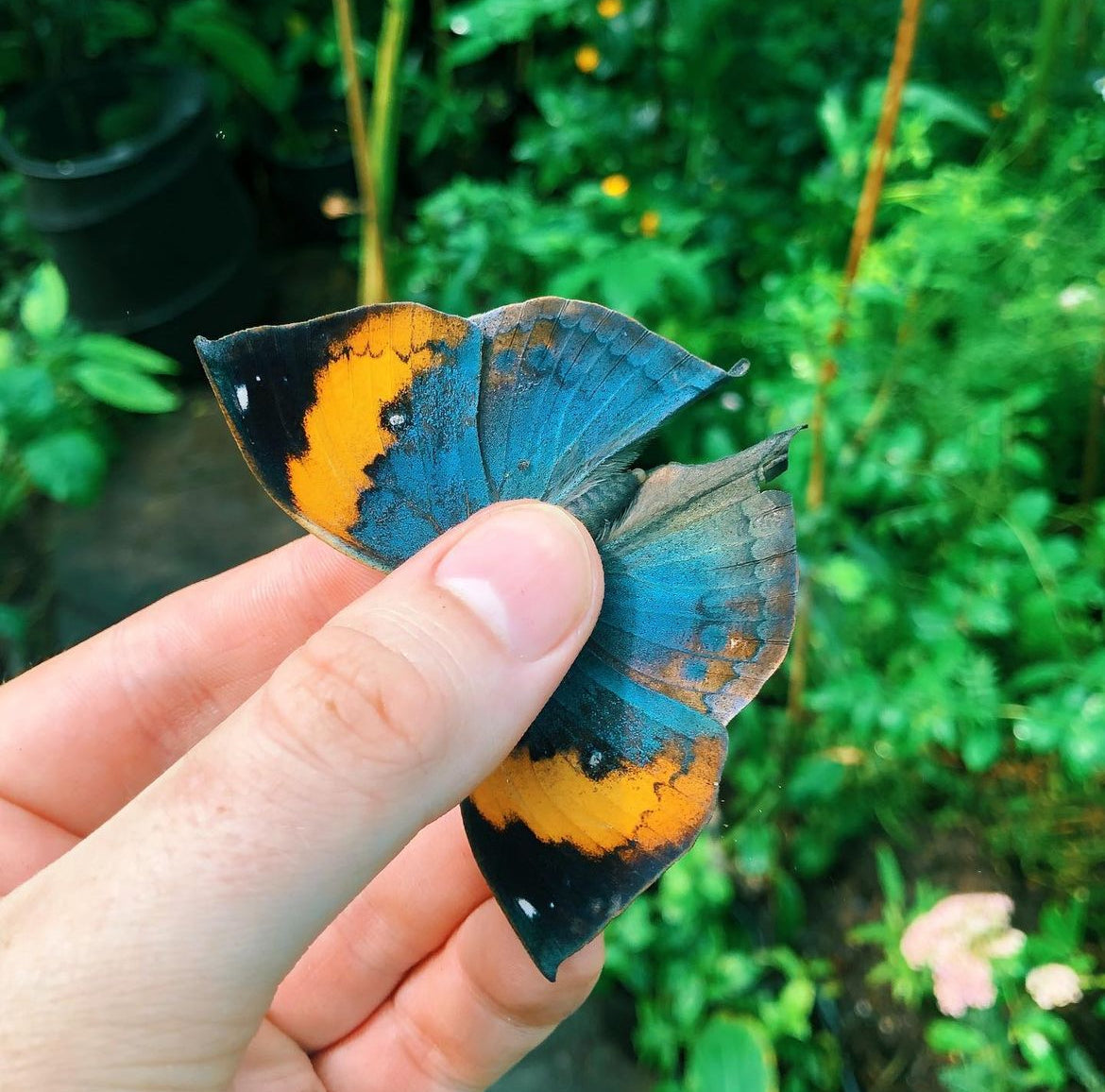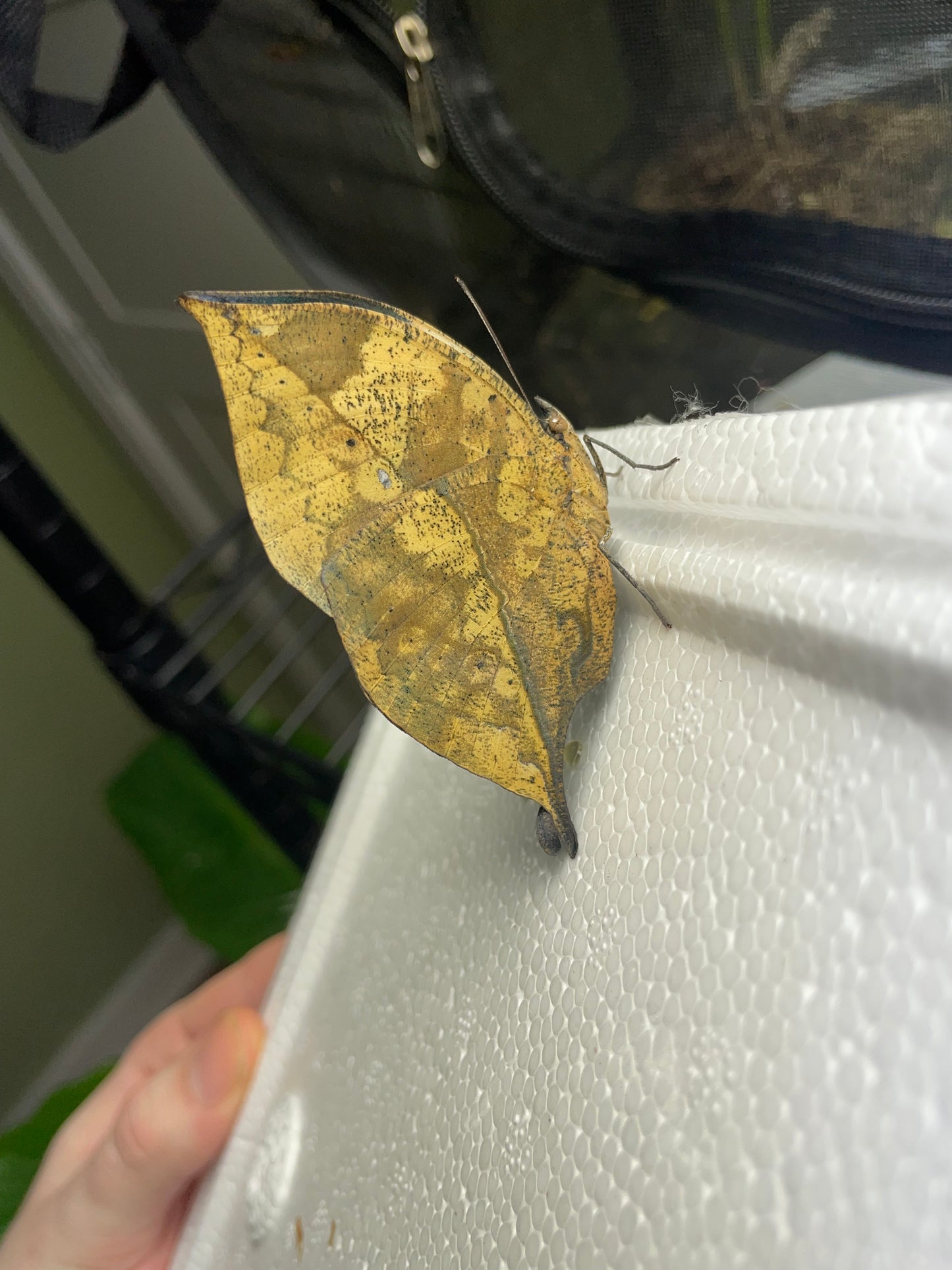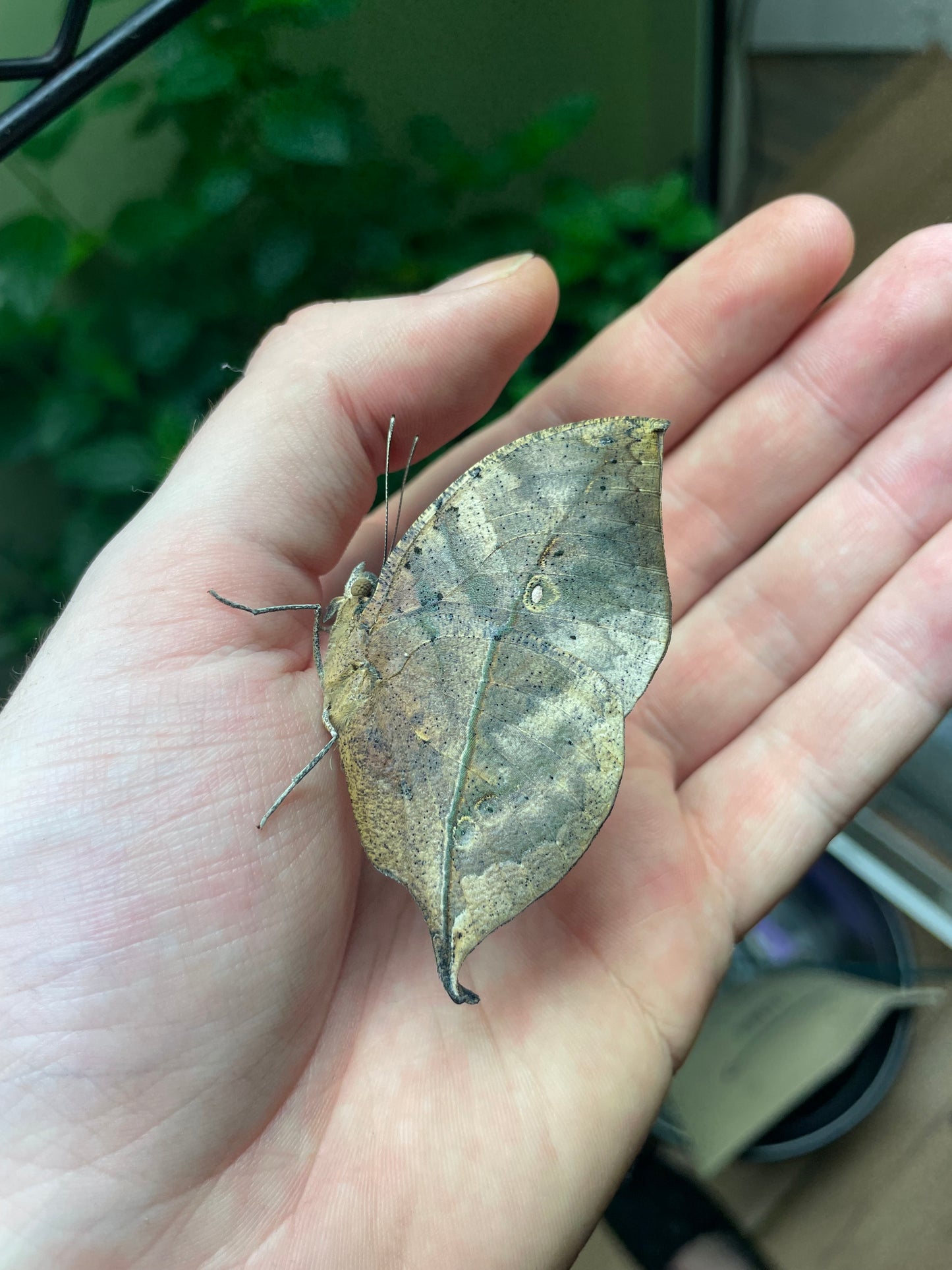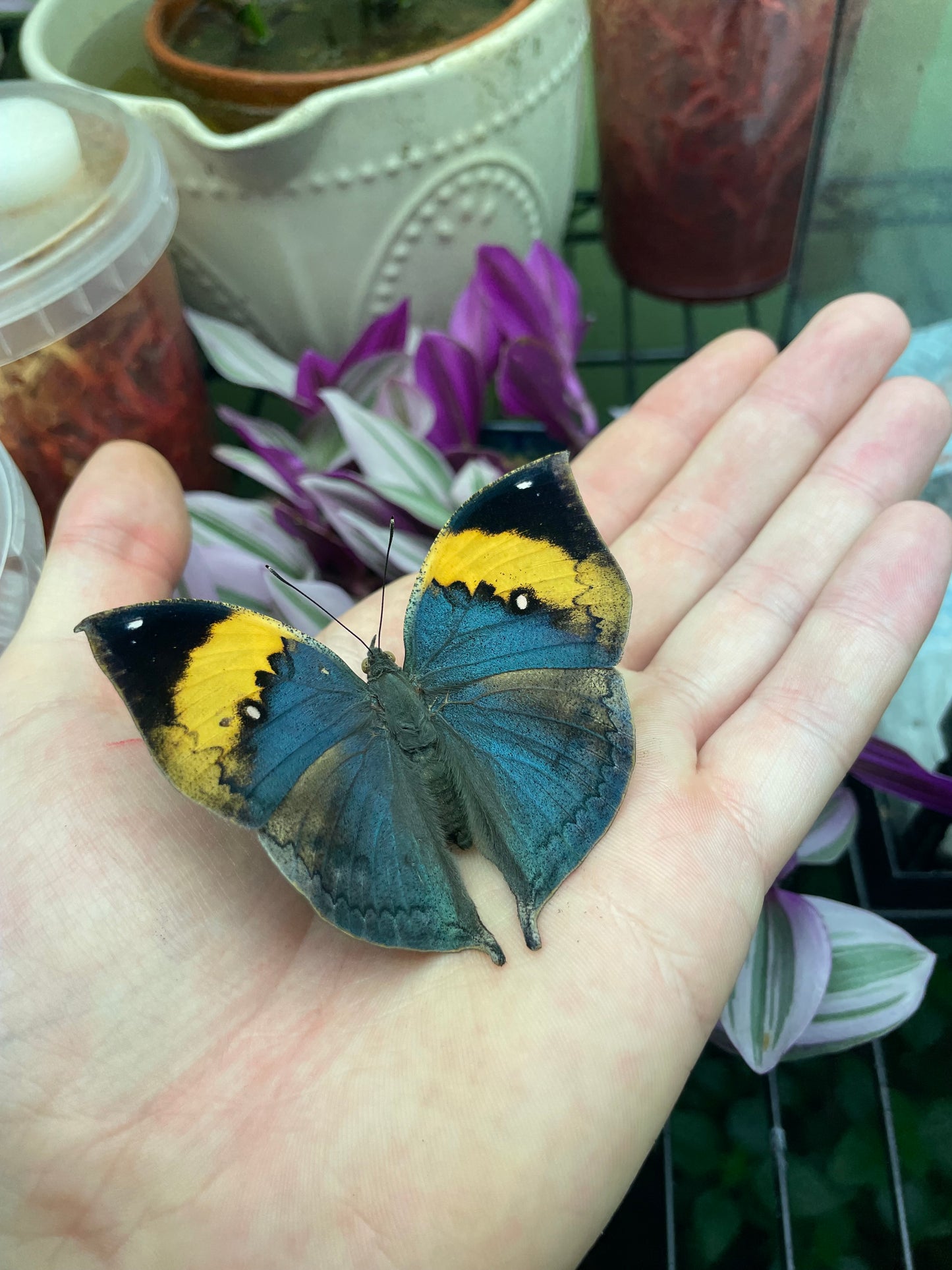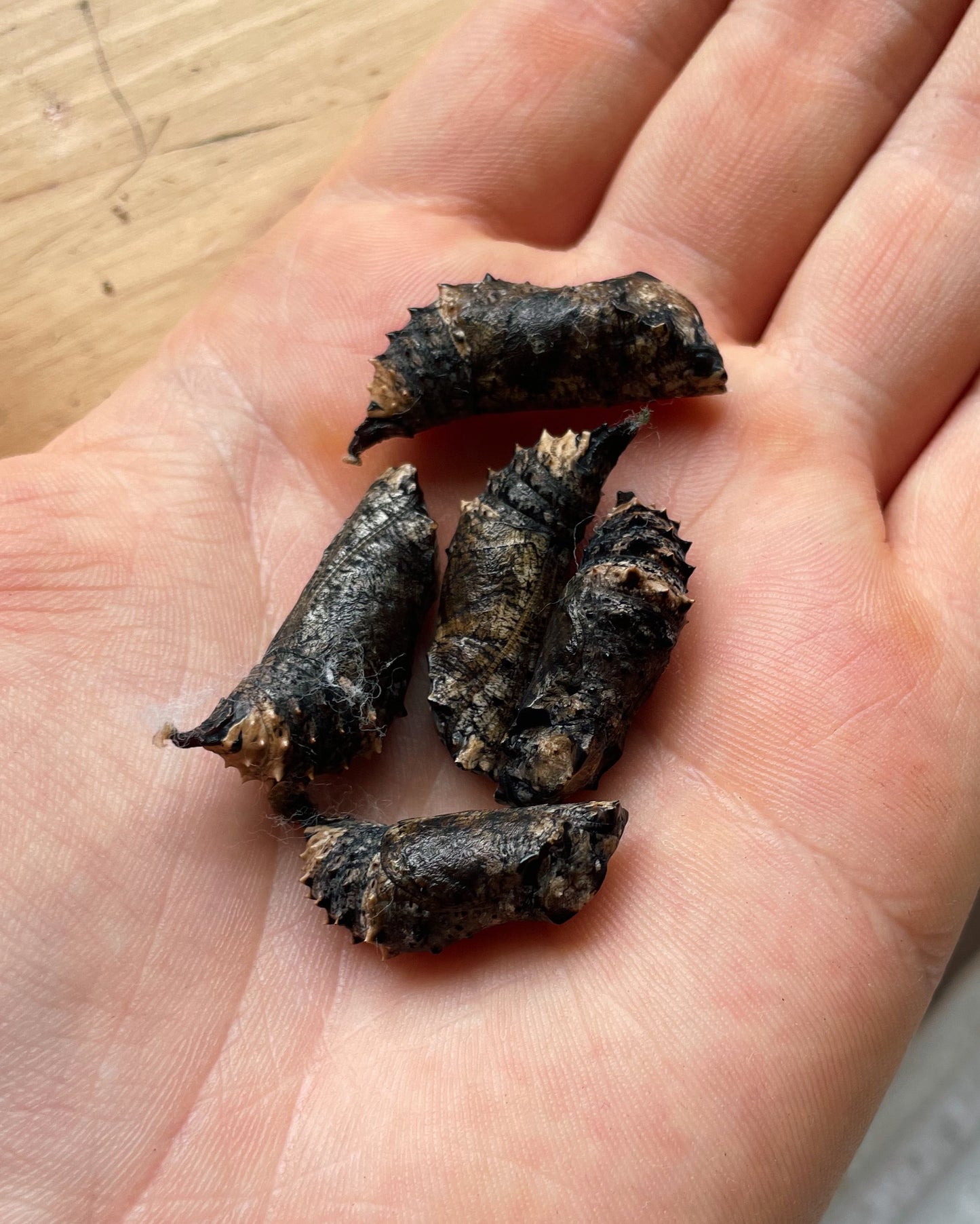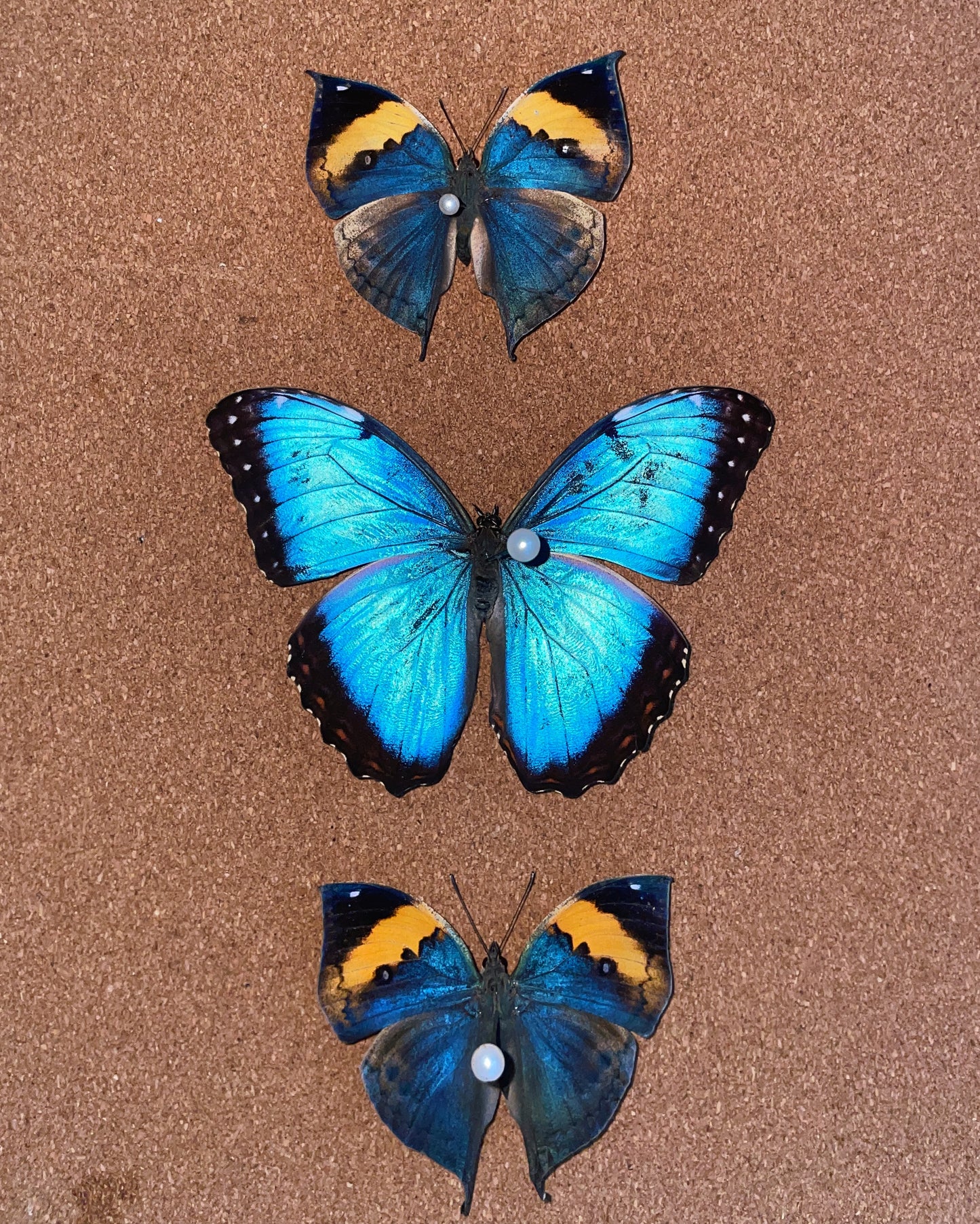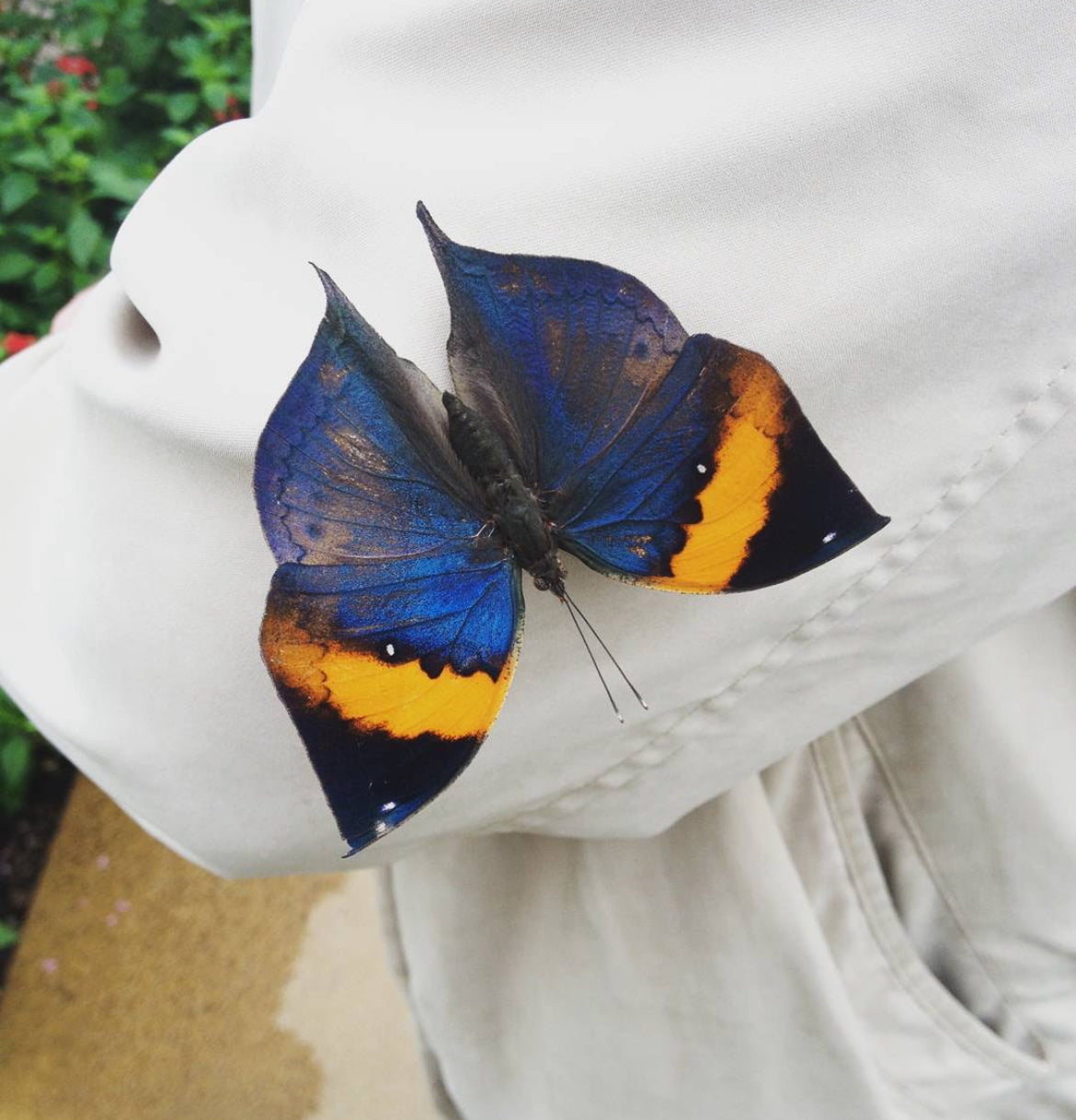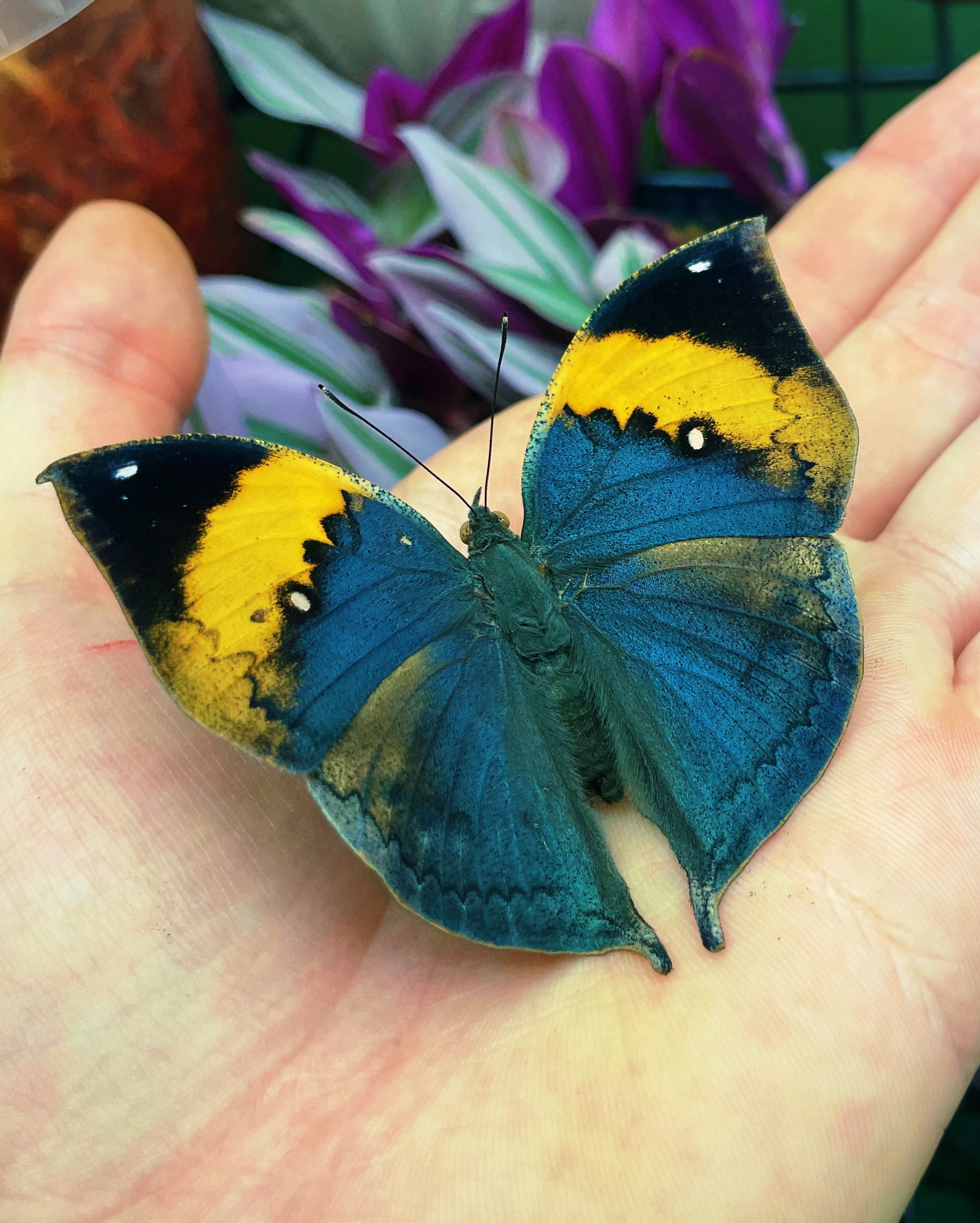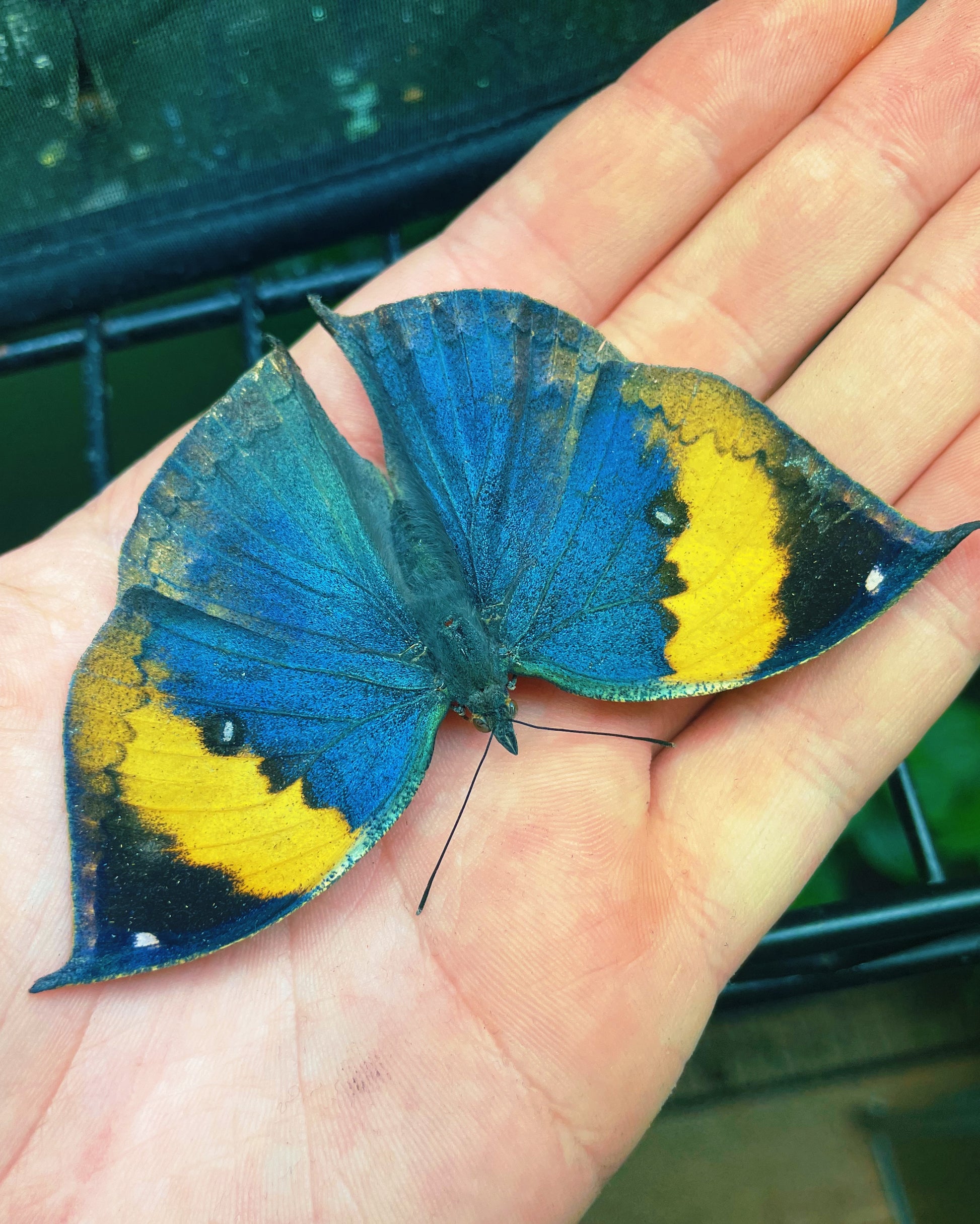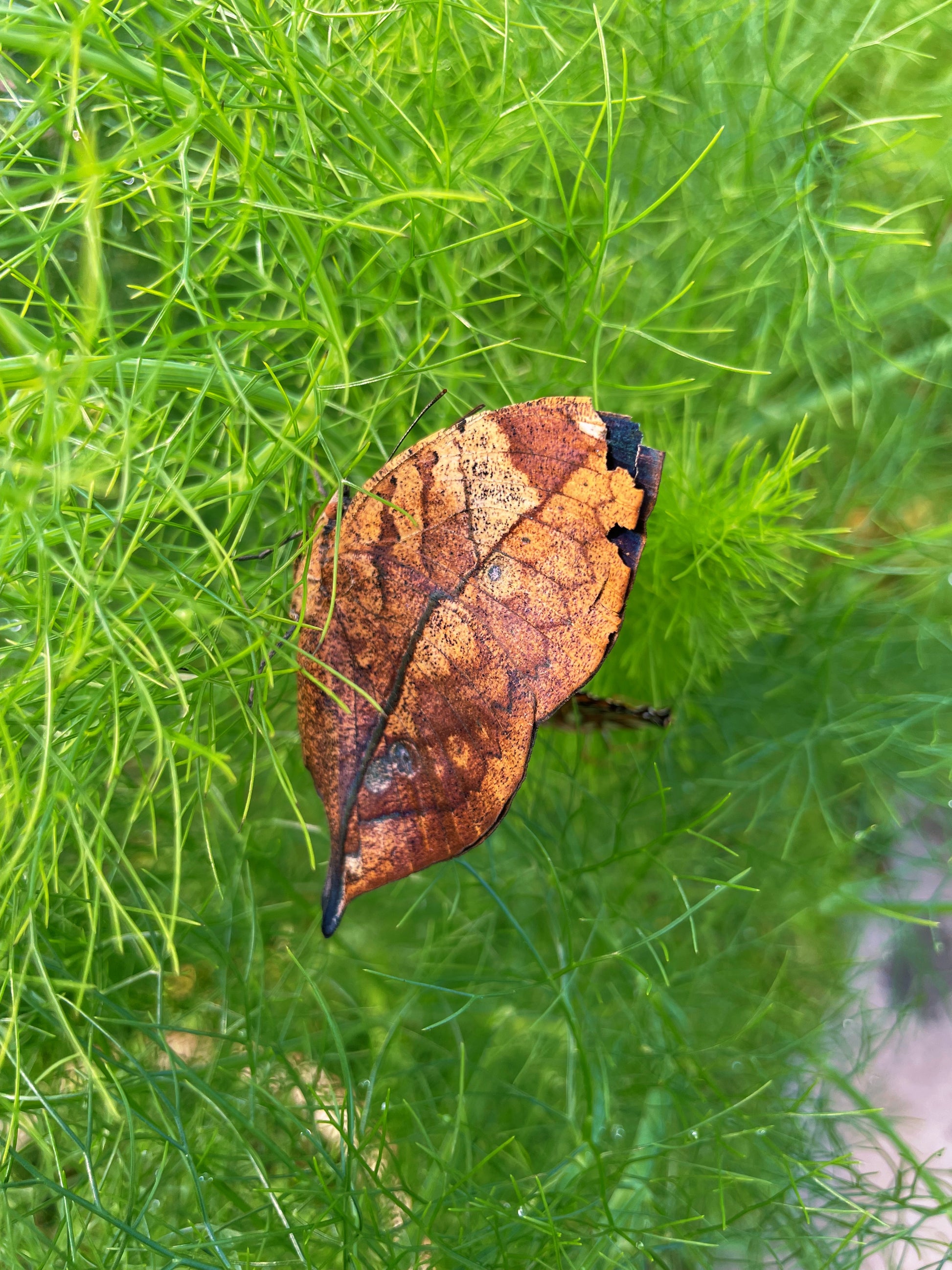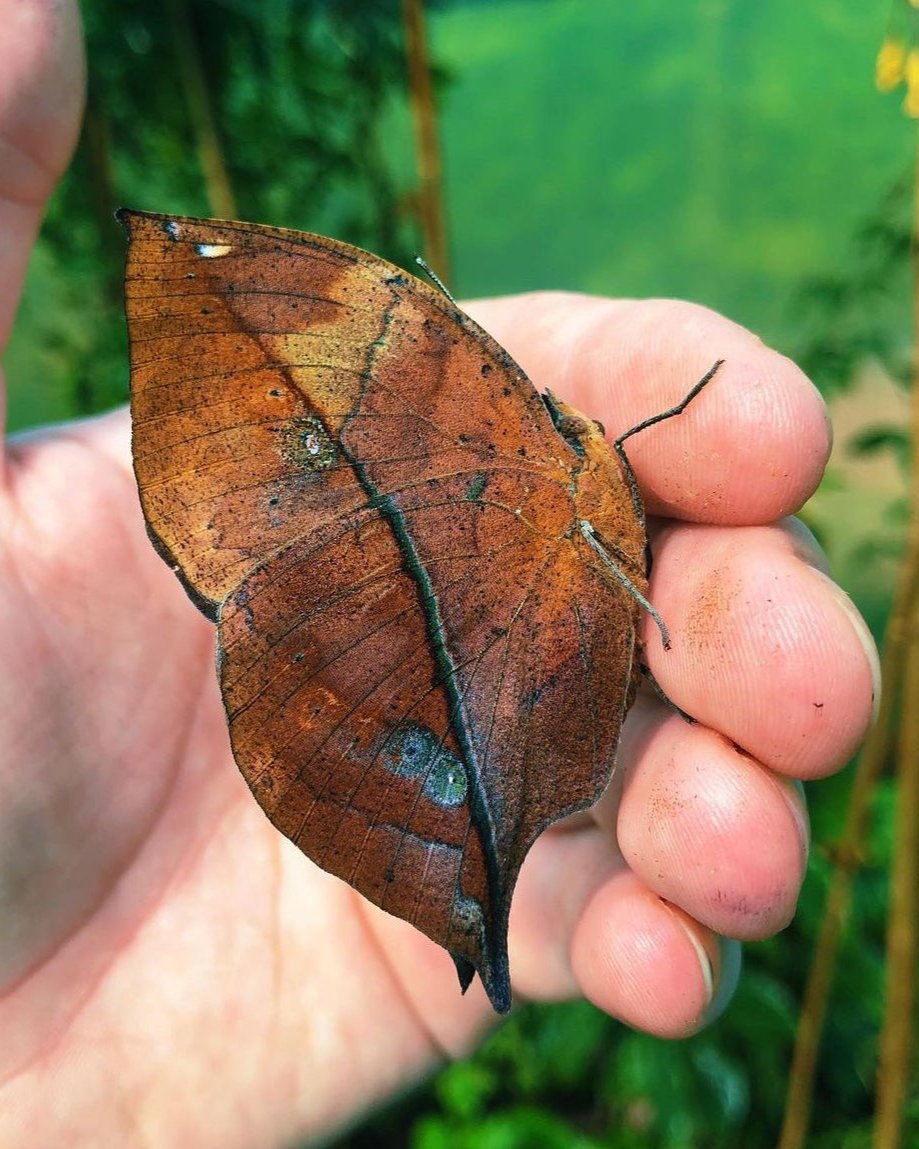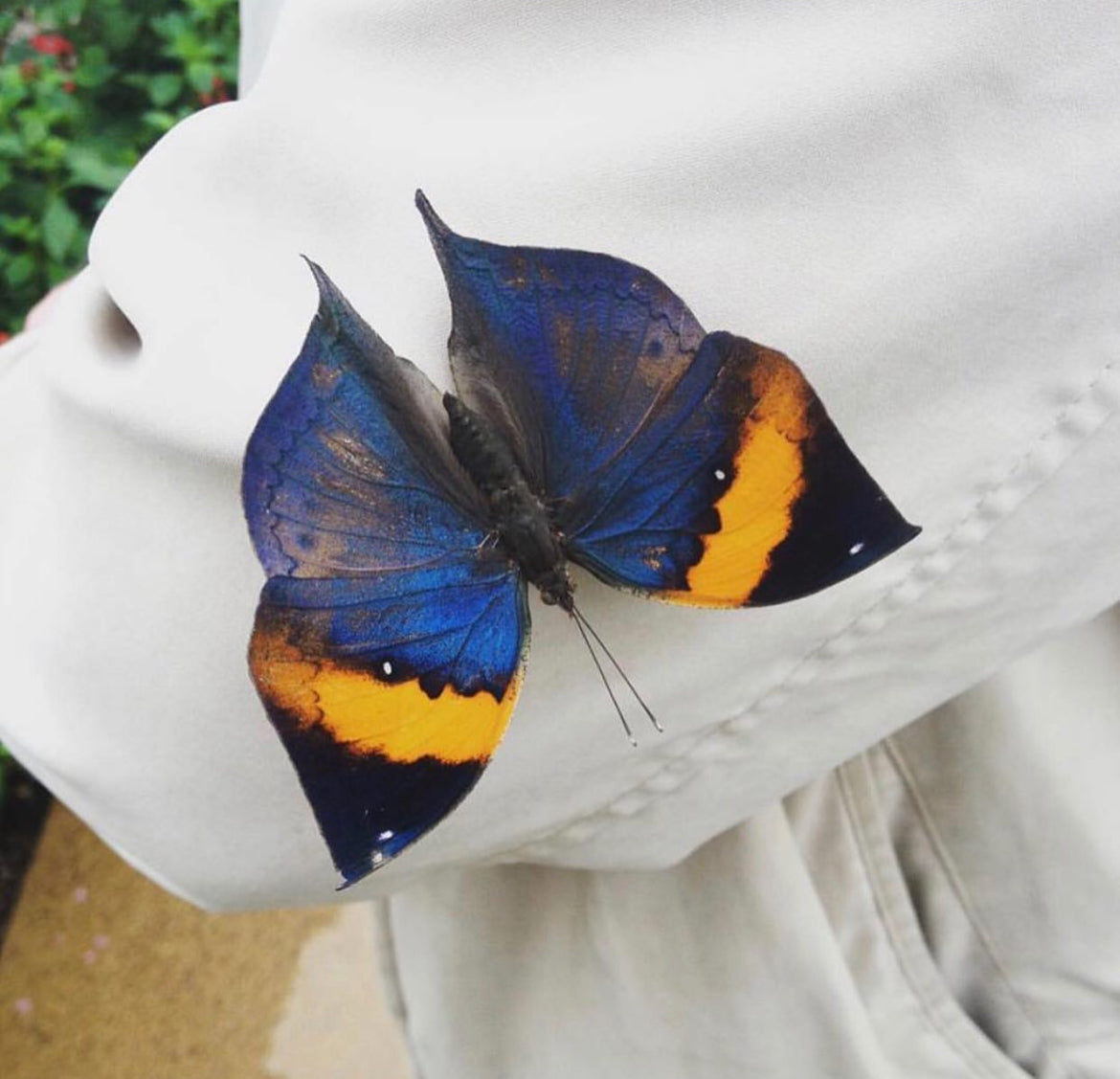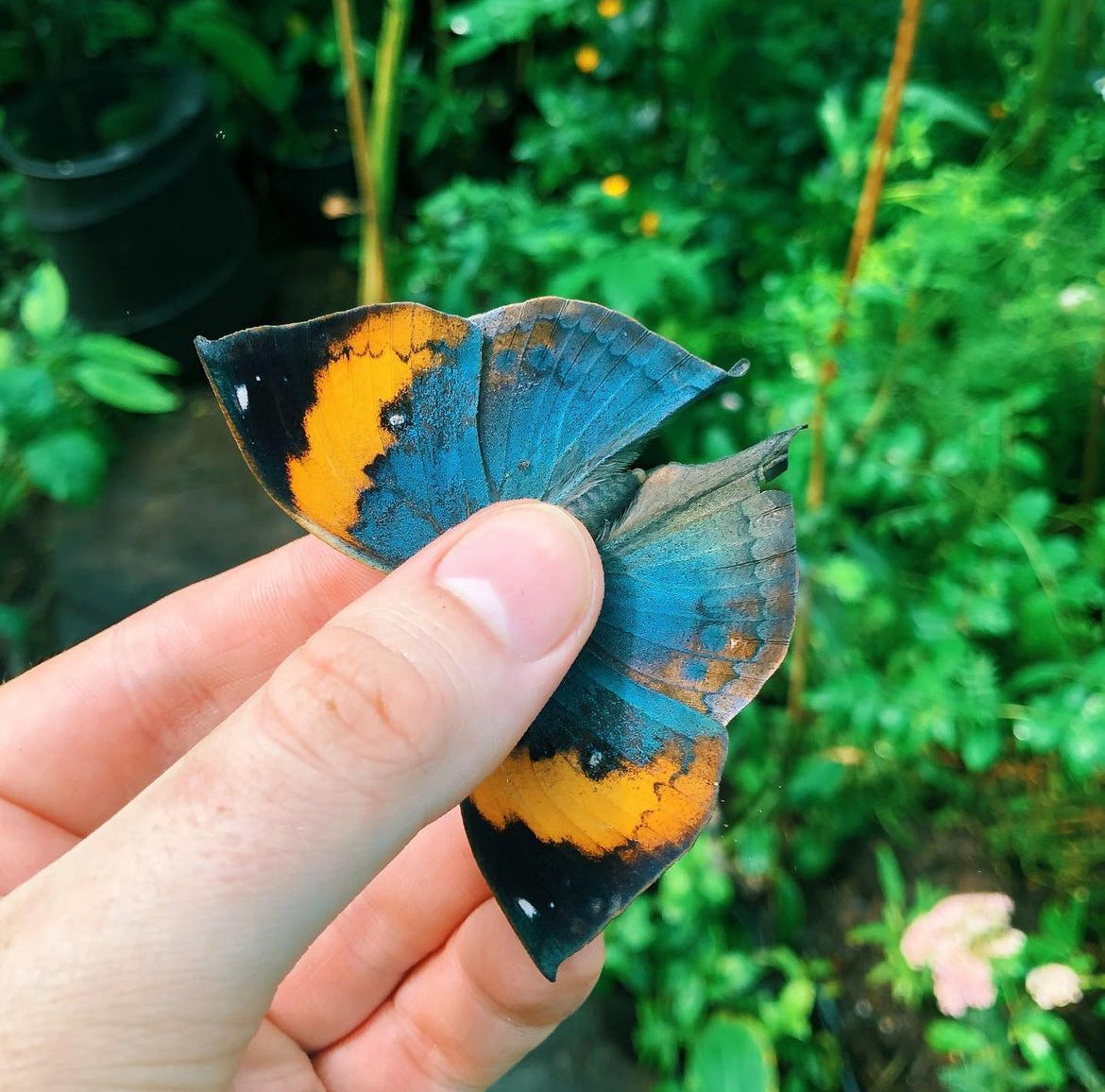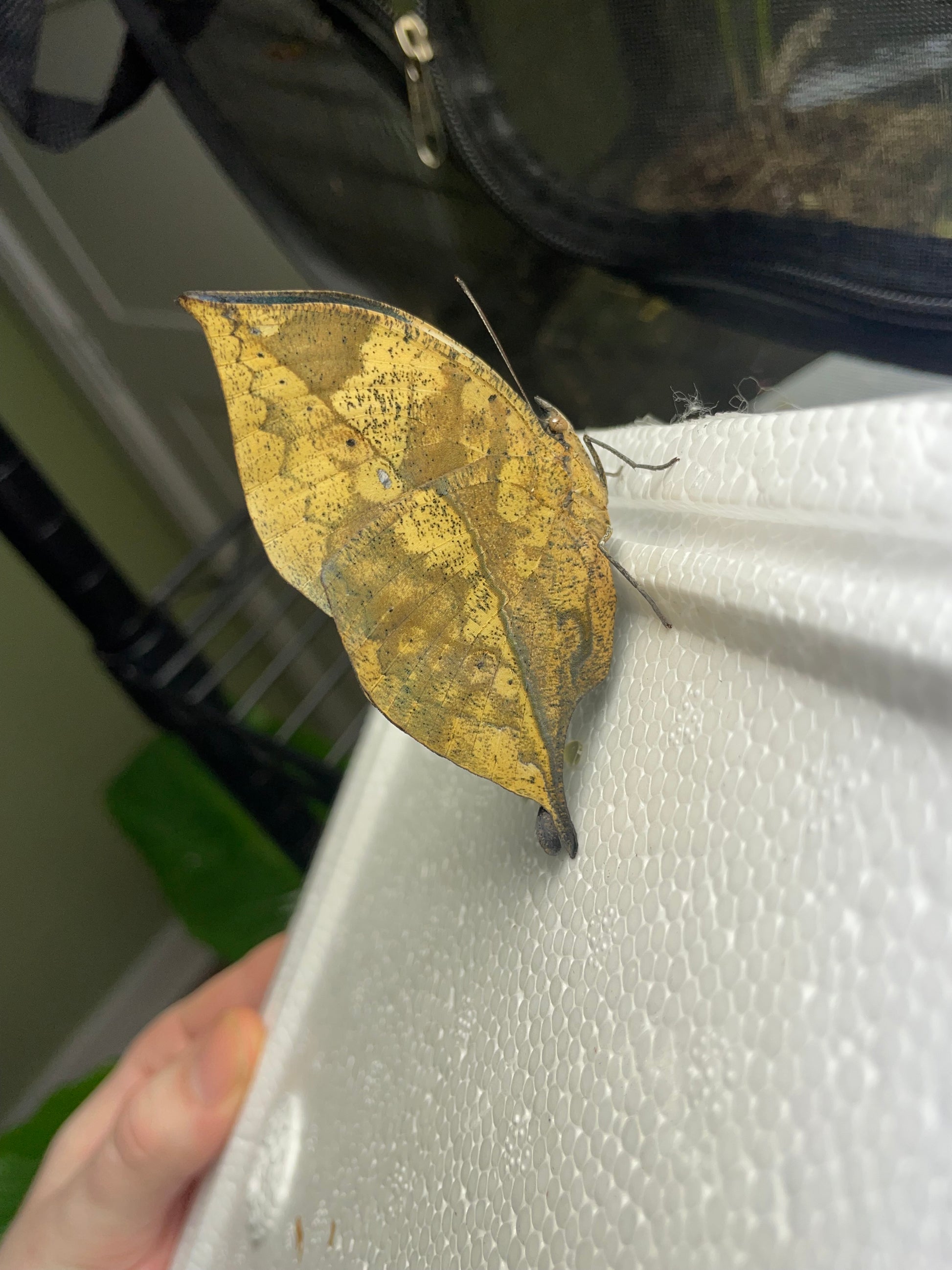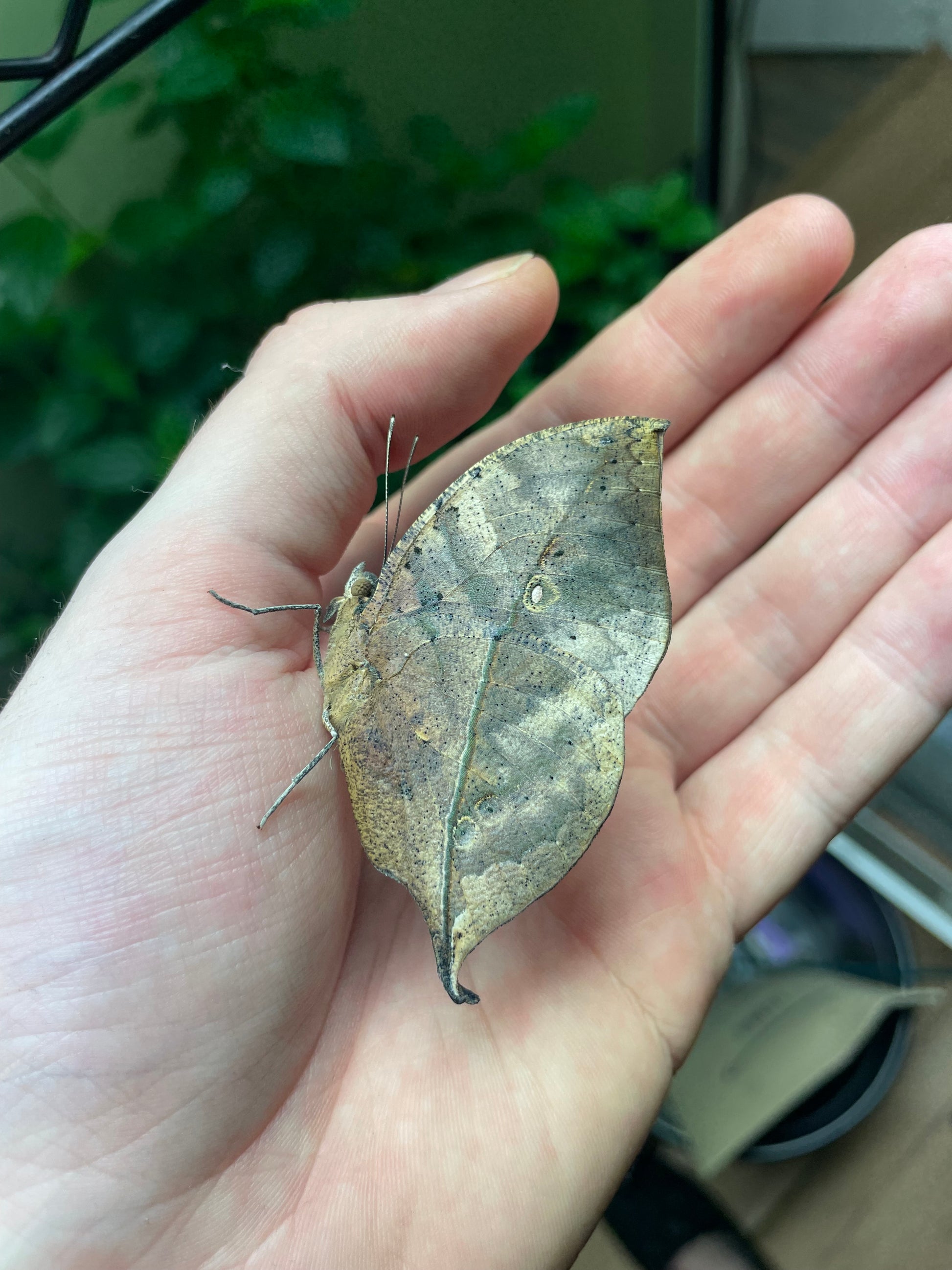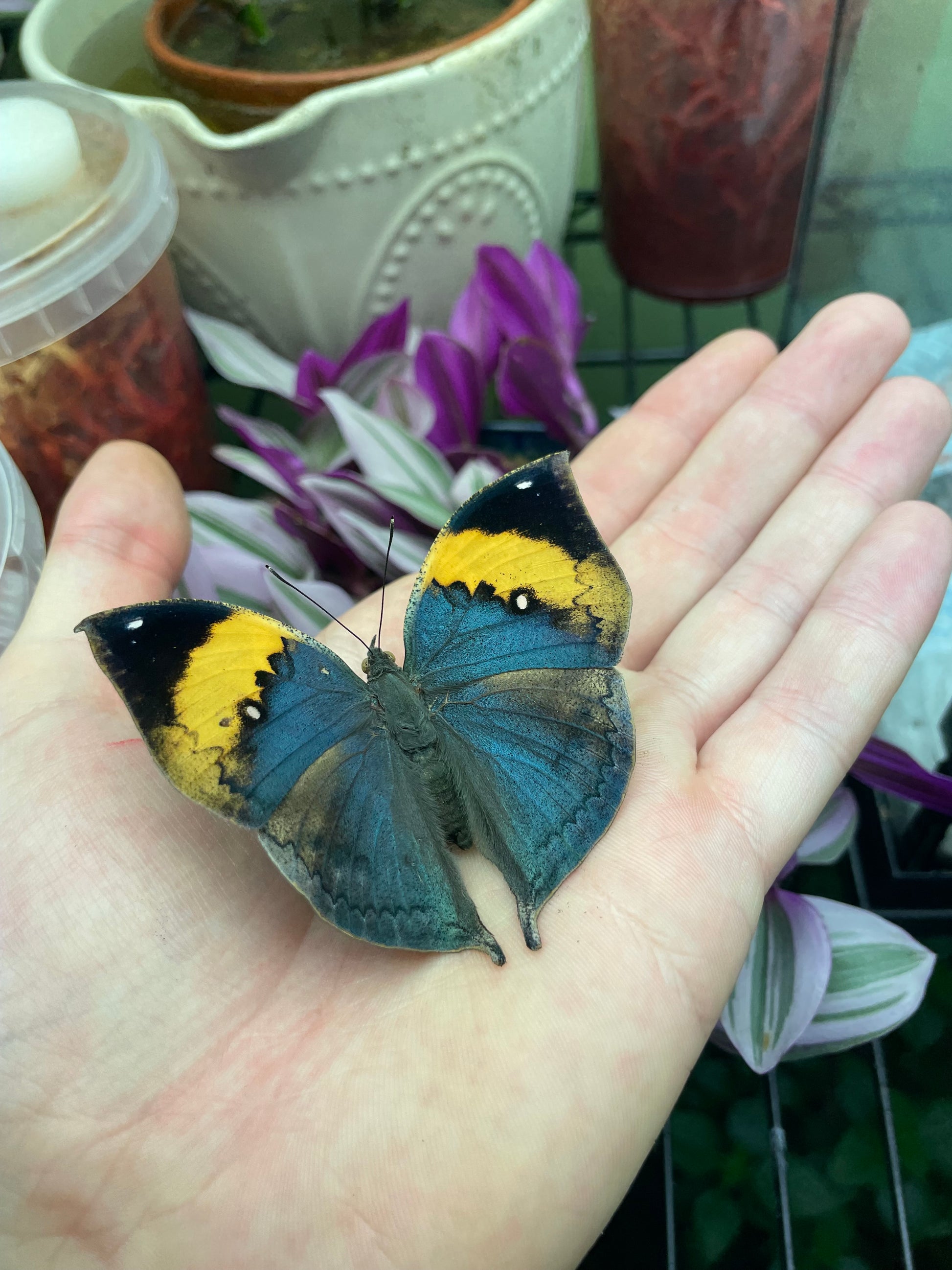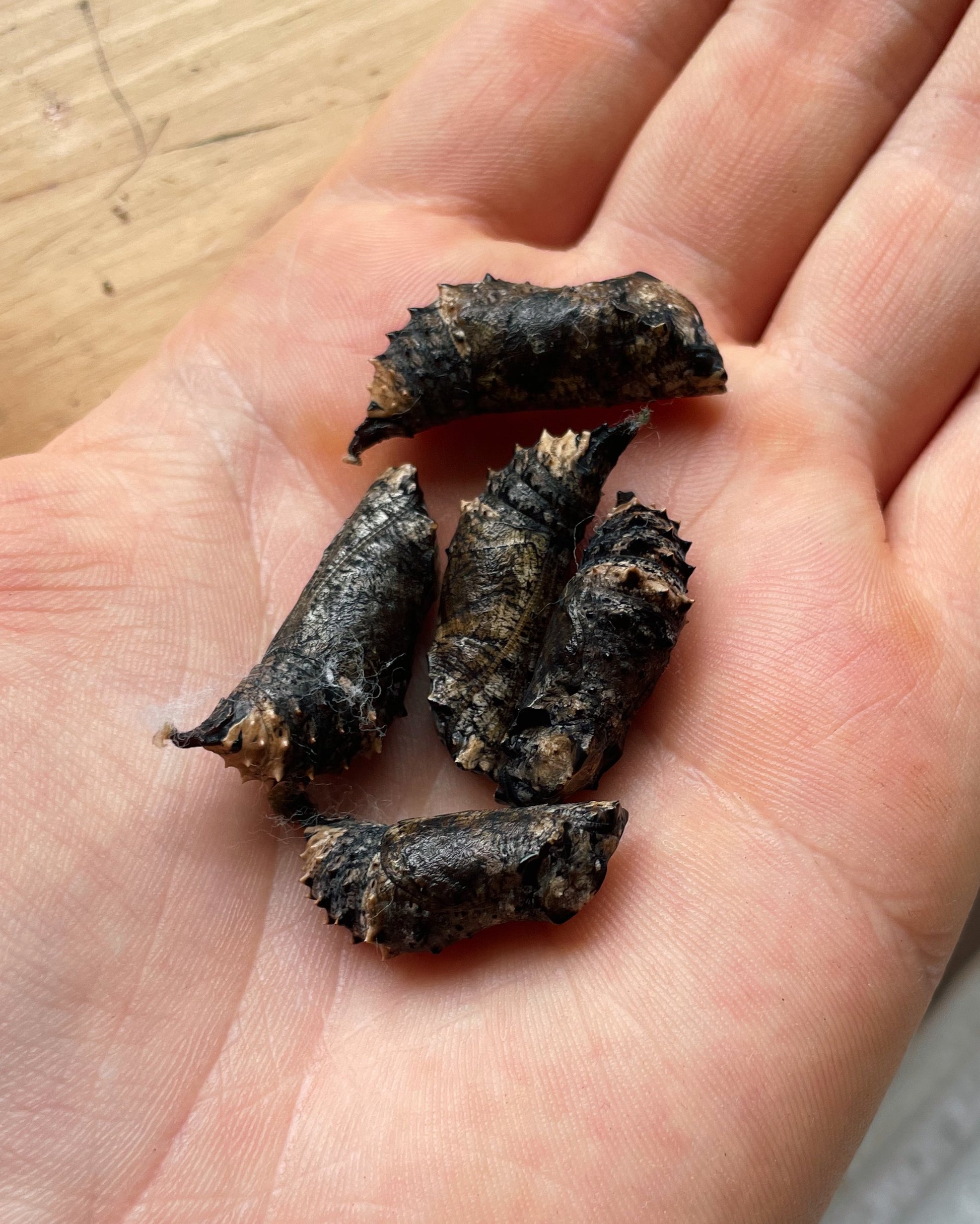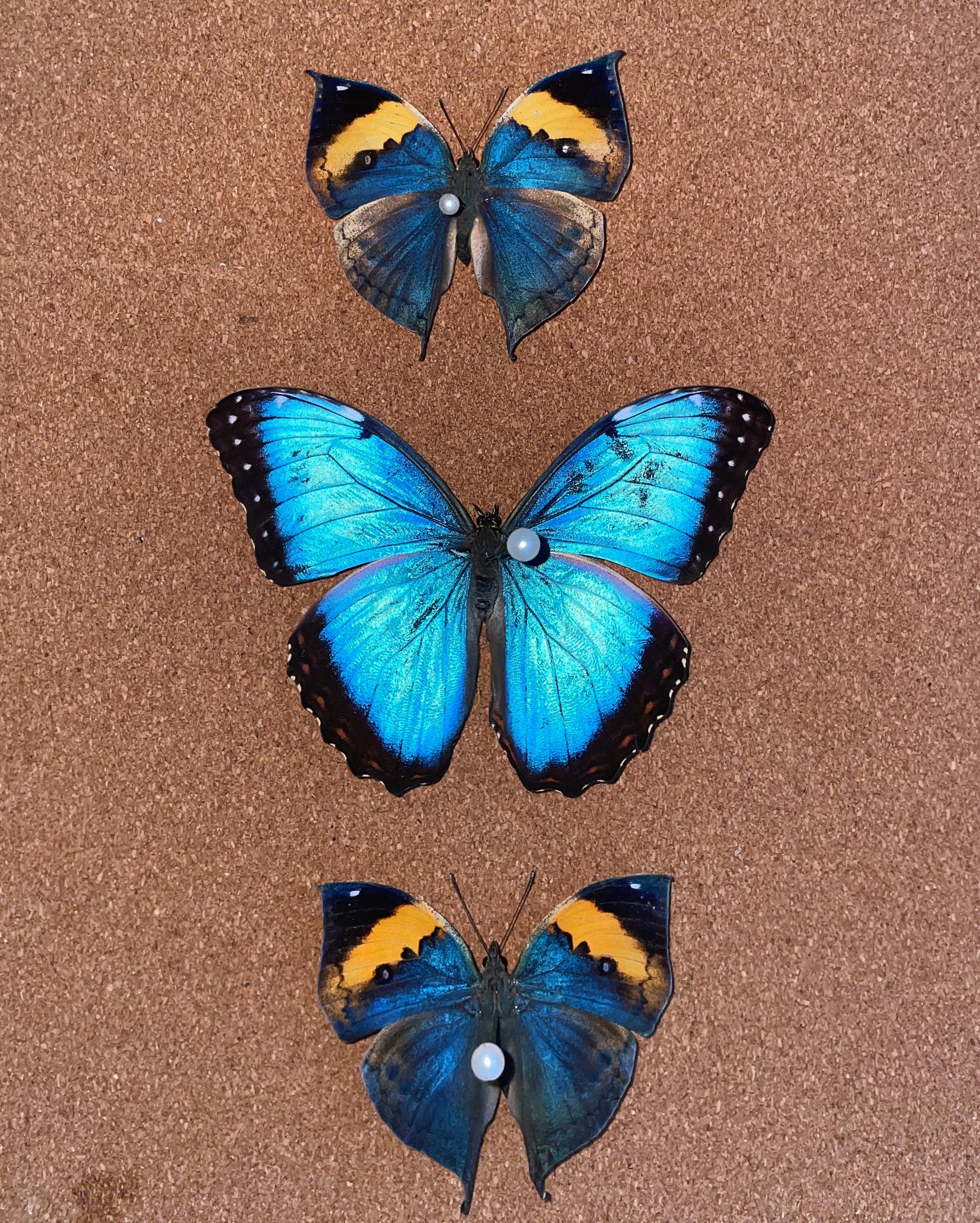Bugs & Butterflies UK
Indian Leaf Butterfly PUPAE (Kallima inachus)
Indian Leaf Butterfly PUPAE (Kallima inachus)
Couldn't load pickup availability
Kallima inachus, commonly known as the Indian Oakleaf or Indian Leaf butterfly, is a remarkable species in the family Nymphalidae. It is found primarily in South and Southeast Asia, inhabiting tropical and subtropical forests. This butterfly is renowned for its incredible mimicry, a defense mechanism that allows it to resemble a dead leaf when its wings are closed - the underside of its wings display intricate patterns of browns and grays, complete with midrib-like markings and veins, making it almost indistinguishable from real fallen leaves. Even more incredibly, these patterns vary between individual butterflies with several distinct leaf forms displayed in the butterflies. Research has shown multiple genes to be involved in determining the leaf mimetic pattern of Kallima inachus. Additionally, insectivorous birds are slow to recognise the butterflies masquerading as leaves, particularly among leaf litter.
In contrast, the upper sides of its wings are vibrant, featuring striking blues and golden-yellow with black margins, visible only in flight and when the butterfly is warming up or feeding. This stark contrast in appearance highlights its dual strategy for survival—camouflage when at rest and warning coloration in motion.
The caterpillars feed on plants of the genus Strobilanthes, and related Acanthacaea like Hygrophila, which are native to their forested habitats. Adults feed on rotting fruits, tree sap, and nectar - with a strong preference for fermenting (rotting) fruit juices containing alcohol. Research has even shown that the egg production of female butterflies increases when their diet is supplemented with ethanol - this can be provided in captivity by allowing fruit to overripen. Adult butterflies of this species are long-lived, surviving for many months in the wild when overwintering. We have seen individuals live for longer than six months!
As forests face threats from human activity, the habitats of Kallima inachus are under pressure. Its extraordinary mimicry and ecological role make it an important species for biodiversity awareness and conservation efforts - our pupae are supplied from butterfly farms in Thailand where indigenous communities are closely involved with habitat preservation and biodiversity conservation.
Difficulty - Easy to hatch and care for (1/10)
Host plants - Hygrophyla, Strobilanthes; Acanthacaea.
Conditions - Room temperature is sufficient but appreciates warmth; pupae require humidity.
Lifecycle - Continually brooded; adults live for many weeks or months.
Share
